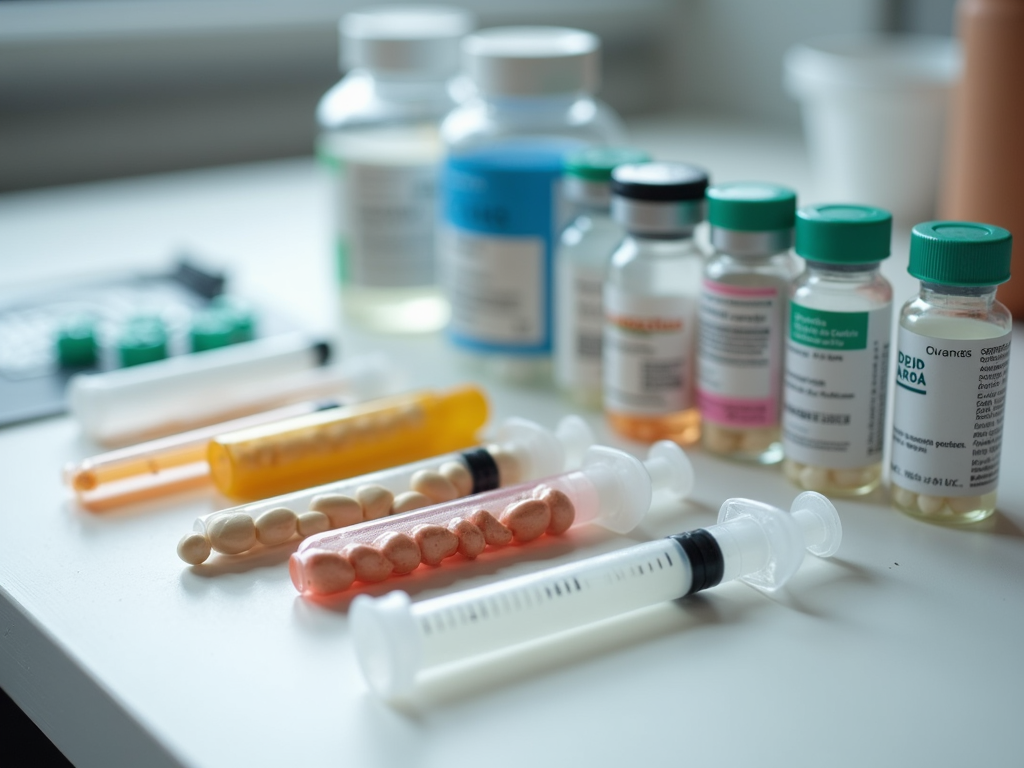Guide to Fertility Treatments
March 13, 2025, 7:39 a.m.
Fertility treatments offer hope to people struggling with infertility. These medical options help increase the chances of pregnancy by tackling various reproductive challenges. From simple pills to advanced methods like in vitro fertilization (IVF), this Guide to Fertility Treatments explores the many paths to parenthood.
Understanding Fertility Treatments
Fertility treatments are steps doctors take to help people have a baby when getting pregnant naturally doesn’t work. Infertility means not conceiving after a year of trying (or six months if the woman is over 35). About 1 in 10 couples face this issue. Causes can vary—sometimes it’s the woman, sometimes the man, and sometimes it’s both or even a mystery.
Treatments depend on what’s causing the problem. A fertility doctor starts by asking about your health, doing exams, and running tests like blood work or ultrasounds. This helps them create a plan just for you. It’s a big step, but one that brings hope to so many.

Types of Fertility Treatments
There are several ways to tackle infertility. Here’s a breakdown:
Fertility Drugs
- Clomiphene Citrate (Clomid): A pill that tricks your brain into making more eggs.
- Gonadotropins: Shots that boost your ovaries to release eggs.
- Letrozole: A drug that helps women with irregular cycles ovulate.
- Metformin: Helps women with PCOS by fixing insulin levels.
Assisted Reproductive Technologies (ART)
- In Vitro Fertilization (IVF): Eggs and sperm meet in a lab, then embryos go into the uterus.
- Intracytoplasmic Sperm Injection (ICSI): One sperm gets injected into an egg for tough cases.
- Gamete Intrafallopian Transfer (GIFT): Eggs and sperm go straight into the fallopian tubes.
Surgery
- Laparoscopy: Fixes issues like endometriosis with tiny cuts.
- Hysteroscopy: Checks and repairs the uterus.
- Tubal Surgery: Opens blocked fallopian tubes.

The Power of Fertility Hormones
Fertility hormones control how your body prepares for pregnancy. Doctors use them in treatments to boost your chances. Here are the big players:
| Hormone | Job |
|---|---|
| Follicle-Stimulating Hormone (FSH) | Grows eggs in the ovaries |
| Luteinizing Hormone (LH) | Releases the egg |
| Estrogen | Builds the uterine lining |
| Progesterone | Keeps the lining ready |
| Human Chorionic Gonadotropin (hCG) | Triggers ovulation and supports pregnancy |
The best fertility hormones for increasing chances of pregnancy depend on your needs. FSH and hCG, for example, are stars in IVF. Your doctor picks what works for you.

The Emotional Side of Fertility Treatments
Going through fertility treatments feels like a rollercoaster. One day you’re hopeful, the next you’re crushed if it doesn’t work. I’ve heard from friends who’ve been there—waiting for results is tough. One said, ‘Every negative test felt like a punch, but my husband kept me going.’
Support matters. Talk to your partner, friends, or a counselor. Some clinics even have groups where you can share with others who get it. Dr. Jane Smith, a fertility expert, says, ‘It’s not just physical—it’s emotional too. Lean on people who care.’

Paying for Fertility Treatments
Fertility treatments can hit your wallet hard. IVF might cost $10,000 to $15,000 per try, plus $3,000 more for drugs. Simpler options like IUI range from $500 to $4,000. Insurance varies—some plans help, others don’t. Check yours to know.
No coverage? Don’t lose hope. Clinics offer payment plans. Groups like the Cade Foundation give grants. Some folks use loans or even crowdfunding on sites like GoFundMe. Talk to a financial counselor at your clinic—they can guide you to options that fit.

What Affects Success Rates
Success isn’t guaranteed, but it’s possible. Age matters most—younger women do better because eggs are healthier. For IVF, women under 35 have a 40-50% shot per cycle. Over 40? It drops to 10-20%. Other things like sperm quality or health issues play a role too.
Take Sarah, 32, who tried IVF three times. ‘It was exhausting, but I kept going,’ she says. ‘Staying positive helped me push through.’ Clinics matter too—pick one with a good track record.

Wrapping Up
This Guide to Fertility Treatments shows how far science has come. From fertility drugs to IVF, options abound for beating infertility. It’s a tough road—emotionally and financially—but the chance to hold your baby makes it worth it. Explore your choices and talk to a doctor to start.